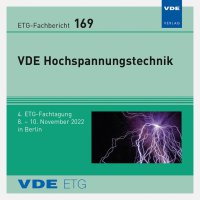Generation of Reproducible HVDC-Impulse Composite Voltage Waveforms Using a Triggered Spherical Spark Gap
Konferenz: VDE Hochspannungstechnik - 4. ETG-Fachtagung
08.11.2022 - 10.11.2022 in Berlin, Germany
Tagungsband: ETG-Fb. 169: VDE Hochspannungstechnik 2022
Seiten: 6Sprache: EnglischTyp: PDF
Autoren:
Dowbysch, Andreas; Goetz, Thomas; Schlegel, Stephan (Technische Universität Dresden, Institute of Electrical Power Systems and High Voltage Engineering, Dresden, Germany)
Inhalt:
The increasing integration of renewable electrical energies is also driving the expansion of high-voltage direct current transmission technology (HVDC). To ensure a reliable operation over the entire lifetime, the HVDC components are tested with corresponding thermal, mechanical and electrical stresses. This involves dielectric tests with composite voltages from DC and impulse voltage. These composite voltages are generated with special test circuits, which include blocking and coupling elements. The task of these elements is to protect the voltage sources against each other and couple all voltages as uninfluenced as possible to the test object. For the superposition of DC and impulse voltages a spherical spark gap can be used as one of these blocking and coupling elements. Unfortunately, the spherical spark gap influences the waveform of the impulse and composite voltage. One reason for this is that the ignition voltage of the spherical spark gap may change during subsequent impulses within a test series under otherwise identical conditions. This leads to non-reproducible composite voltages, which must be observed during dielectric tests. This contribution aims to support the understanding of the spherical spark gap ignition behaviour with respect to DC and impulse voltage polarity during composite voltage tests. Furthermore, the reasons for the observed non-reproducible behaviour are discussed. Finally, the investigation shows how one sided and two-sided triggering of the spherical spark gap can significantly improve the ignition behaviour and therefore the reproducibility of the composite voltage waveform generated using a spherical spark gap.


